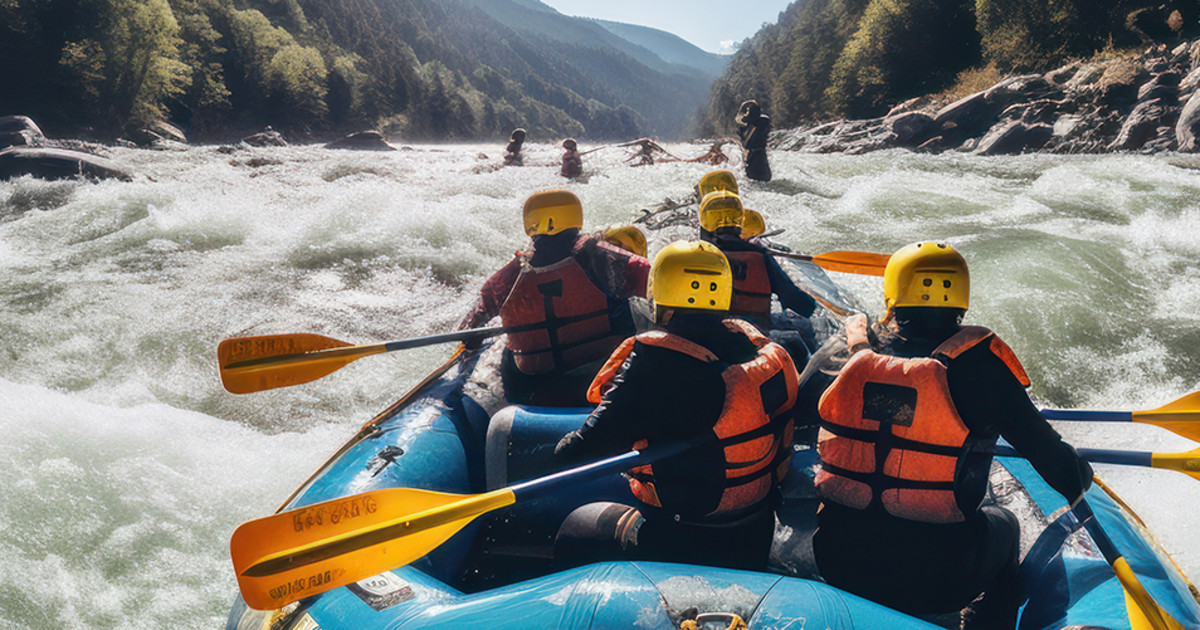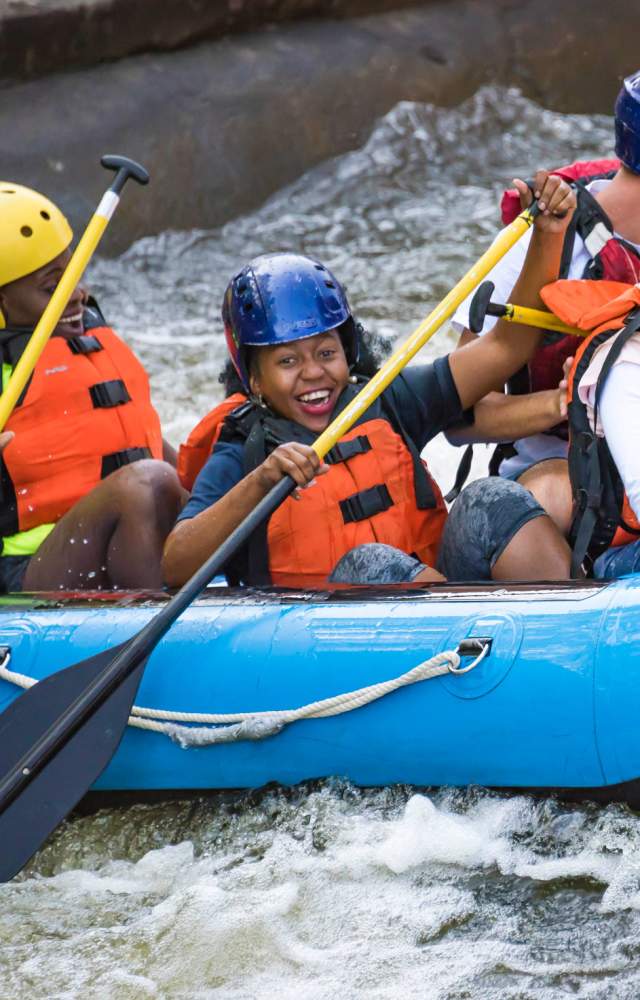Explore Magnificent Rivers with White Water Rafting Colorado
Explore Magnificent Rivers with White Water Rafting Colorado
Blog Article
Necessary Abilities for Water Rafting
Grasping the art of water rafting requires a mix of exact abilities and expertise to navigate the unforeseeable currents of rivers, making it a thrilling yet potentially hazardous activity. From comprehending the complexities of river dynamics to swiftwater rescue strategies and smooth group interaction, the journey down the river requires a mix of competence and versatility. White Water Rafting Colorado.
Paddling Methods
Mastering reliable paddling techniques is crucial for browsing water boatings securely and effectively. Proper paddling not only moves the boating onward however additionally aids in steering and steering through varying water problems. One essential method is the forward stroke, where paddlers dip the blade completely right into the water and pull it back alongside the plethora to produce propulsion. Timing and control are key to guarantee that all paddlers are in sync, optimizing the power of each stroke.
Aside from the forward stroke, the draw stroke is necessary for making fast adjustments or pulling the raft more detailed to a things. By placing the paddle blade perpendicular to the water's surface and drawing the water in the direction of the raft, paddlers can effectively change the vessel's direction. The backstroke serves as a valuable device for backing up or reducing down the raft when essential.
River Reviewing
Effective paddling techniques, such as the forward stroke and attract stroke, play a crucial role in browsing and translating river currents, a skill called river analysis. River reading includes the capacity to analyze the speed, depth, and direction of the water circulation to make informed choices while navigating rapids. By recognizing how the water moves obstacles and via various channels, rafters can pick the most effective course to safely traverse the river.
One trick aspect of river analysis is identifying various sorts of currents, consisting of eddies, waves, and hydraulics, and comprehending just how they can affect the boating. Eddies, for instance, are locations where the water streams in a round movement, frequently supplying possibilities for remainder or critical maneuvers. Waves can indicate the presence of barriers or rocks, calling for quick changes in paddling strategy. Hydraulics, generally called "openings," are areas where water recirculates back upstream, presenting potential hazards to boatings.
Understanding the ability of river reading is vital for safe and pleasurable rafting experiences, making it possible for paddlers to browse difficult waters with self-confidence and precision.

Swiftwater Rescue
Comprehending swiftwater rescue techniques is vital for water rafting enthusiasts to respond efficiently in emergency situation scenarios on fast-flowing rivers. Swiftwater rescue entails a collection of specialized skills and knowledge targeted at safely extracting individuals from swift-moving water. One crucial aspect of swiftwater rescue is recognizing the hazards existing in fast-flowing rivers, such as strainers, undercut rocks, and solid currents, to prepare view and implement effective rescue operations.
Appropriate tools is essential for swiftwater rescue, including throw bags, rescue ropes, helmets, and individual flotation protection devices. Rafting fanatics must be experienced at using this tools in high-stress situations to guarantee the security of themselves and others. Additionally, swiftwater rescue techniques commonly include synergy and control among rafters to implement intricate rescue maneuvers successfully.
Educating in swiftwater rescue is extremely advised for individuals involving in water rafting activities, as it outfits them with the essential skills to take care of emergency situations swiftly and successfully. White Water Rafting Colorado. By practicing and recognizing swiftwater rescue strategies, water rafting lovers can improve their safety and that of their fellow rafters on challenging river explorations
Team Communication
Efficient teamwork in water rafting depends heavily on smooth communication among staff member to guarantee worked with and safe navigating through tough river problems. Concise and clear communication is important for the success of any rafting expedition. Employee need to be able to efficiently convey vital information such as paddling commands, caution signals, and navigational guidelines.
In the typically uncertain and hectic atmosphere of river rafting, prompt and exact interaction can mean the difference in between a successful run and a potential catastrophe - White Water Rafting Colorado. Each employee plays an important duty in the total communication procedure, whether it be listening diligently to the guide's instructions, relaying info to other paddlers, or signaling for help when required
Establishing a typical language and interaction Learn More Here system prior to hitting the water is vital. This makes certain that everyone gets on the very same web page and recognizes just how to connect effectively throughout the rafting trip. By cultivating a society of open interaction and mutual respect, rafting teams can improve their efficiency and safety and security on the river.

Security Procedures
In the context of water rafting, the structure of group communication developed during expeditions is more reinforced via rigorous adherence to security procedures. Security methods are vital in ensuring the health of both rafters and overviews throughout water rafting trips. One important security method is the appropriate putting on of personal flotation protection gadgets (PFDs) by every person on the plethora. PFDs are critical in emergencies to keep participants afloat and give buoyancy. Additionally, rafters have to be fluent in swiftwater rescue techniques and protocols in instance of a person dropping crazy or if the boating capsizes.
Another secret security protocol is the comprehensive briefing given by guides before getting started on a rafting trip. By purely sticking to these safety protocols, water rafting expeditions can be both thrilling and risk-free for all participants included.
Verdict
Finally, grasping vital skills for water rafting is important for a satisfying and secure experience on the river. Paddling strategies, river analysis, swiftwater rescue, team interaction, and security procedures are all vital components that add to a successful rafting journey. By developing these abilities, rafters can navigate tough waters with self-confidence and make certain the security of themselves and their group participants.
Grasping the art of water rafting calls for a combination of specific abilities and understanding to navigate the unforeseeable currents of rivers, making it a thrilling yet possibly dangerous activity. By putting the paddle blade perpendicular to the water's surface and pulling the water towards the boating, paddlers can properly transform the vessel's instructions.Recognizing swiftwater rescue techniques is important for water rafting lovers to respond properly in emergency situation circumstances on fast-flowing rivers.Efficient synergy in water rafting relies greatly on seamless interaction amongst team participants to about his make certain coordinated and secure navigating with tough river problems.In final thought, mastering vital abilities for water rafting is critical for a safe and delightful experience on the river.
Report this page